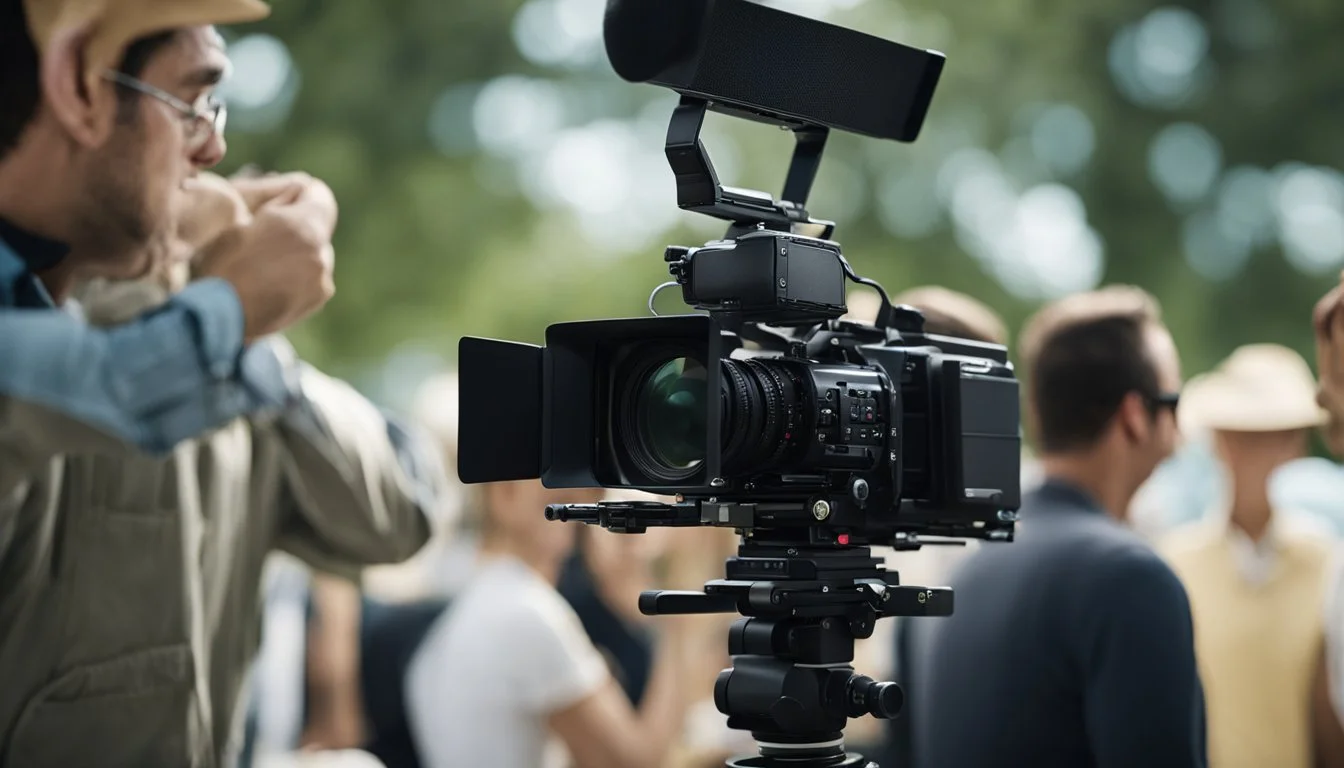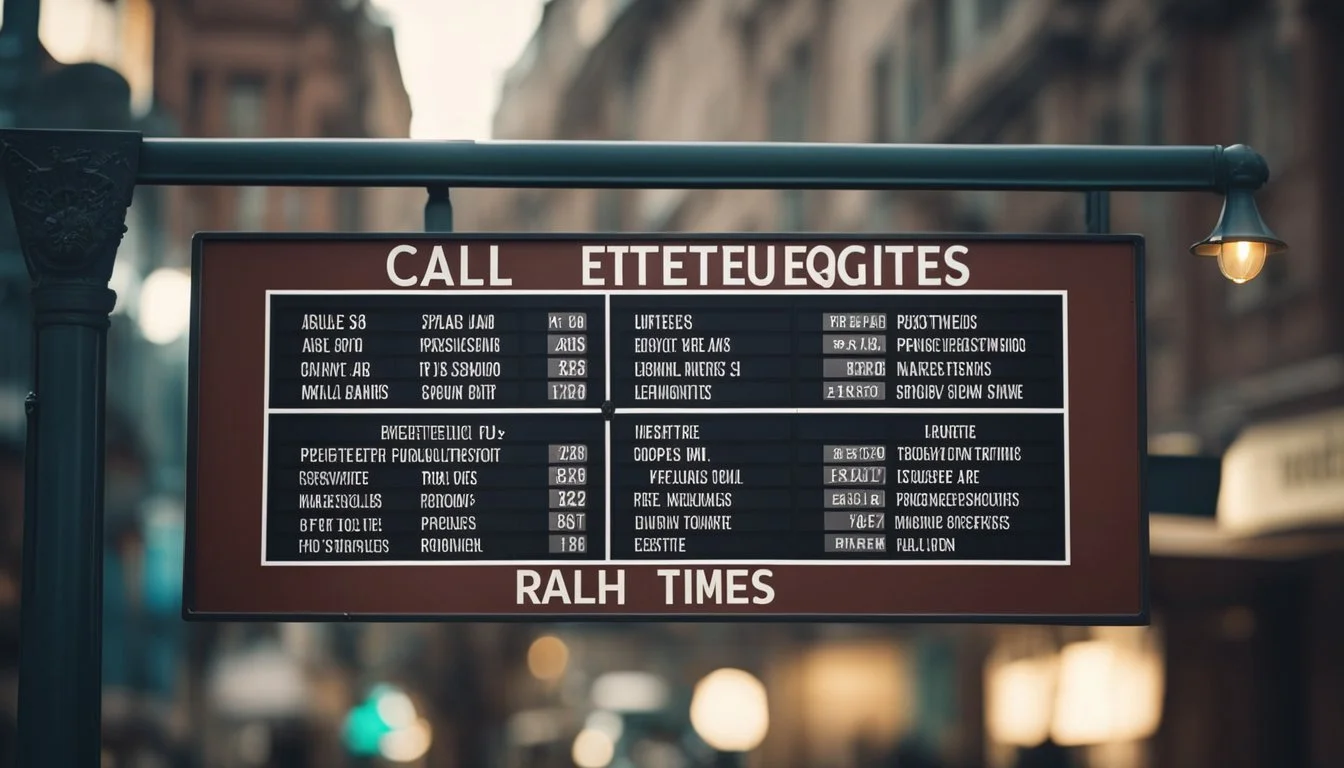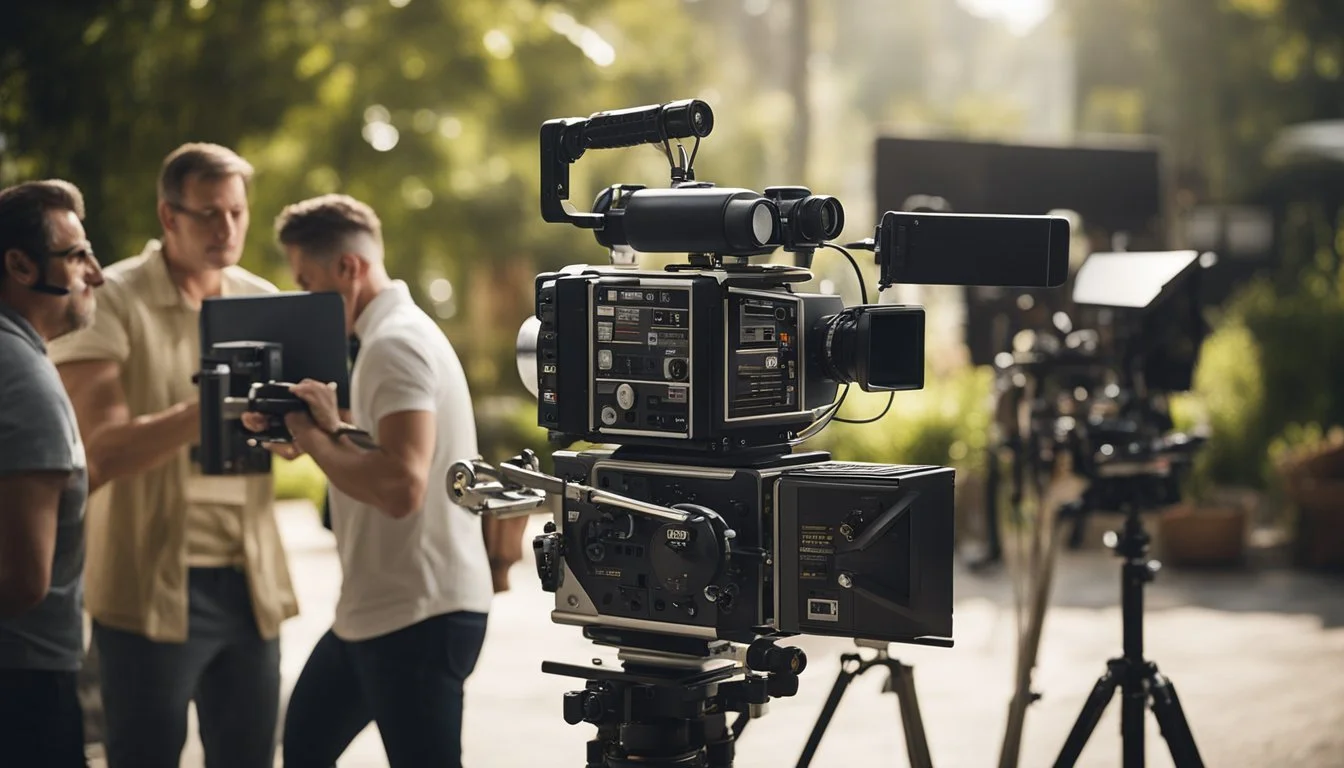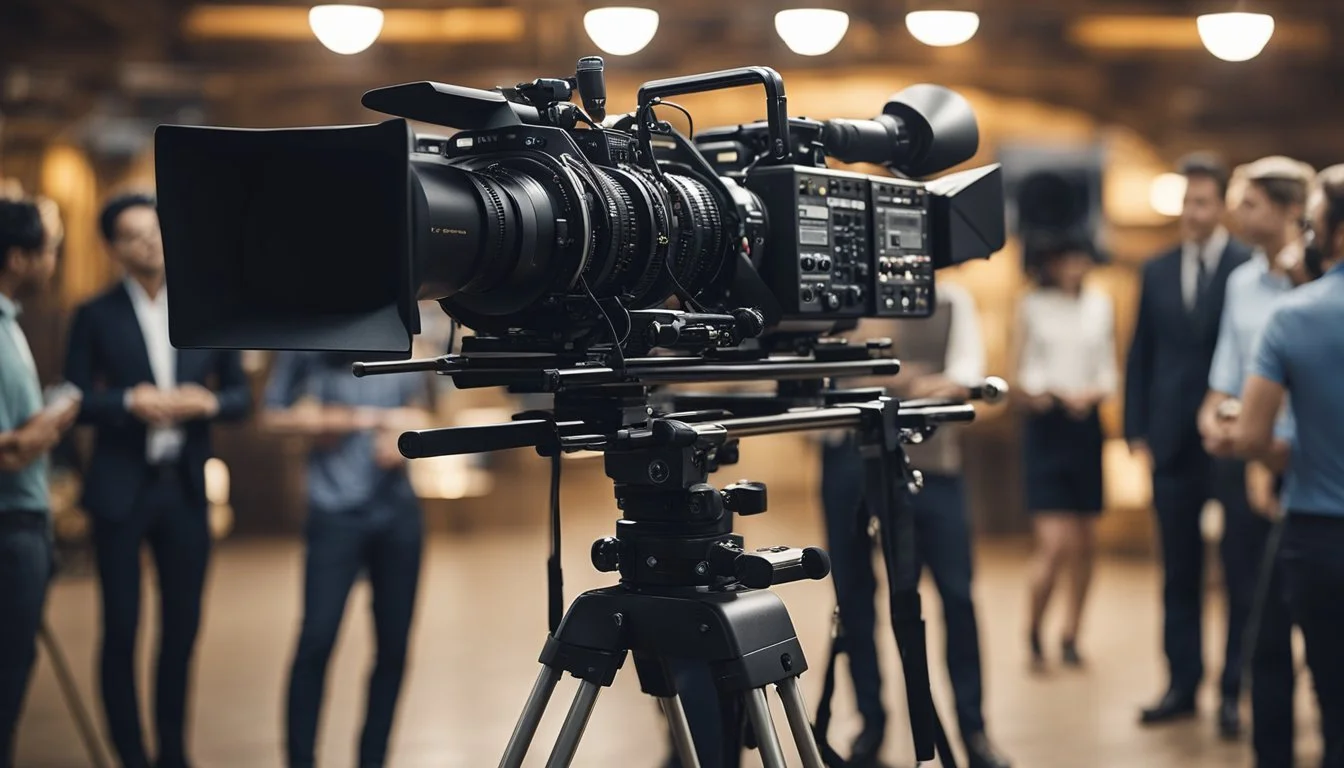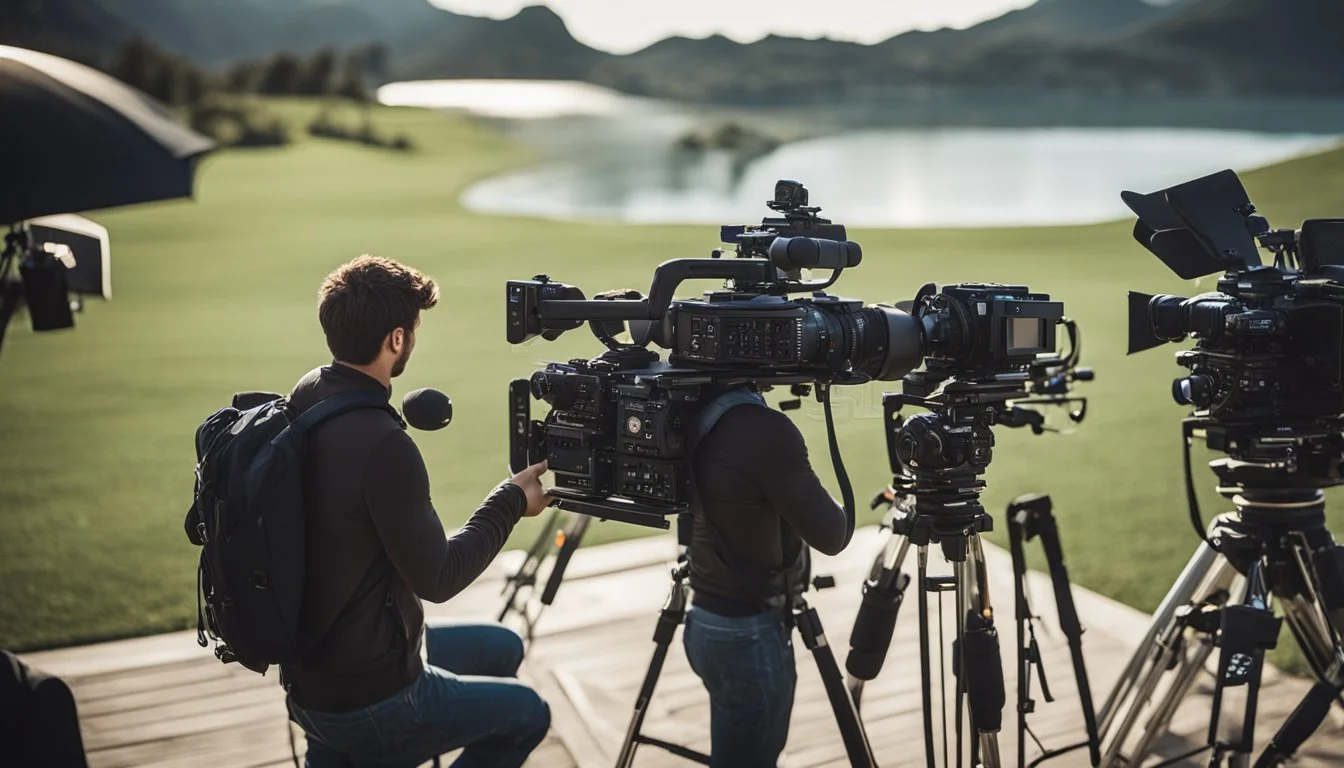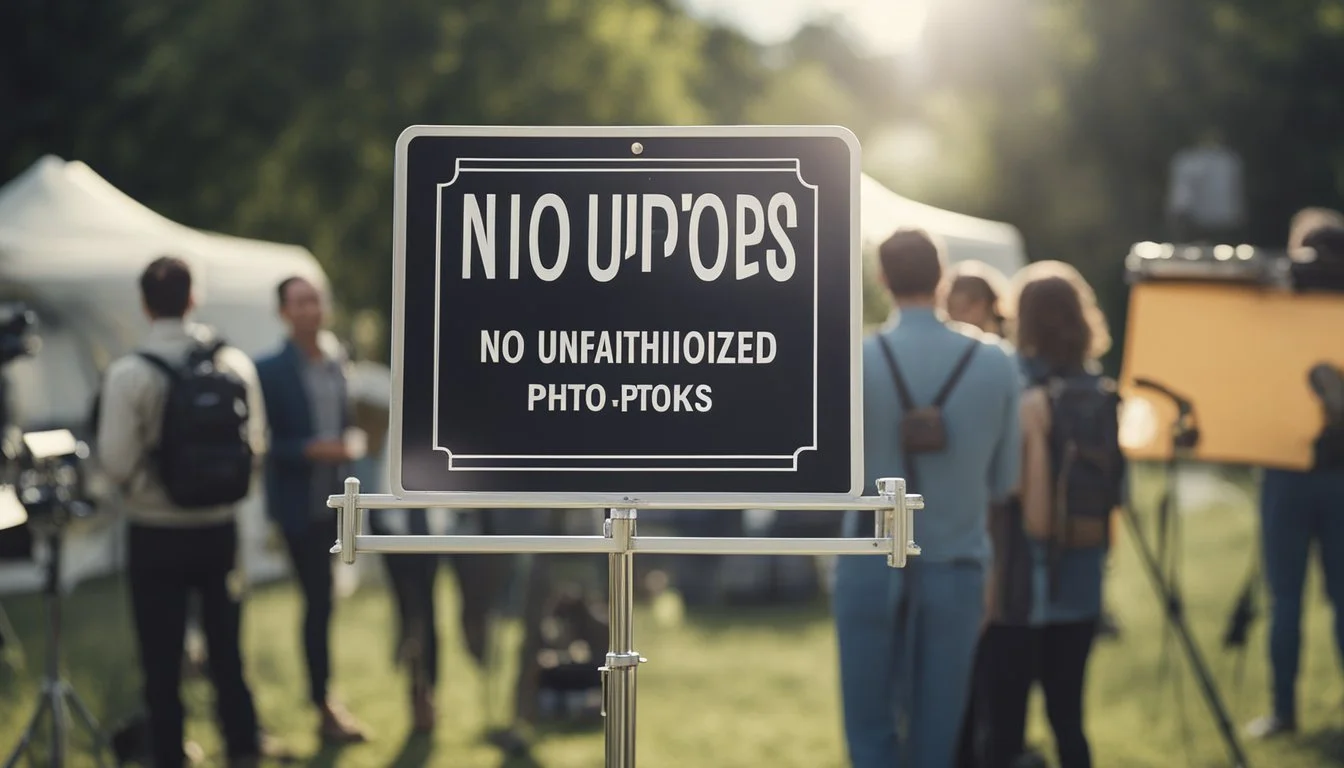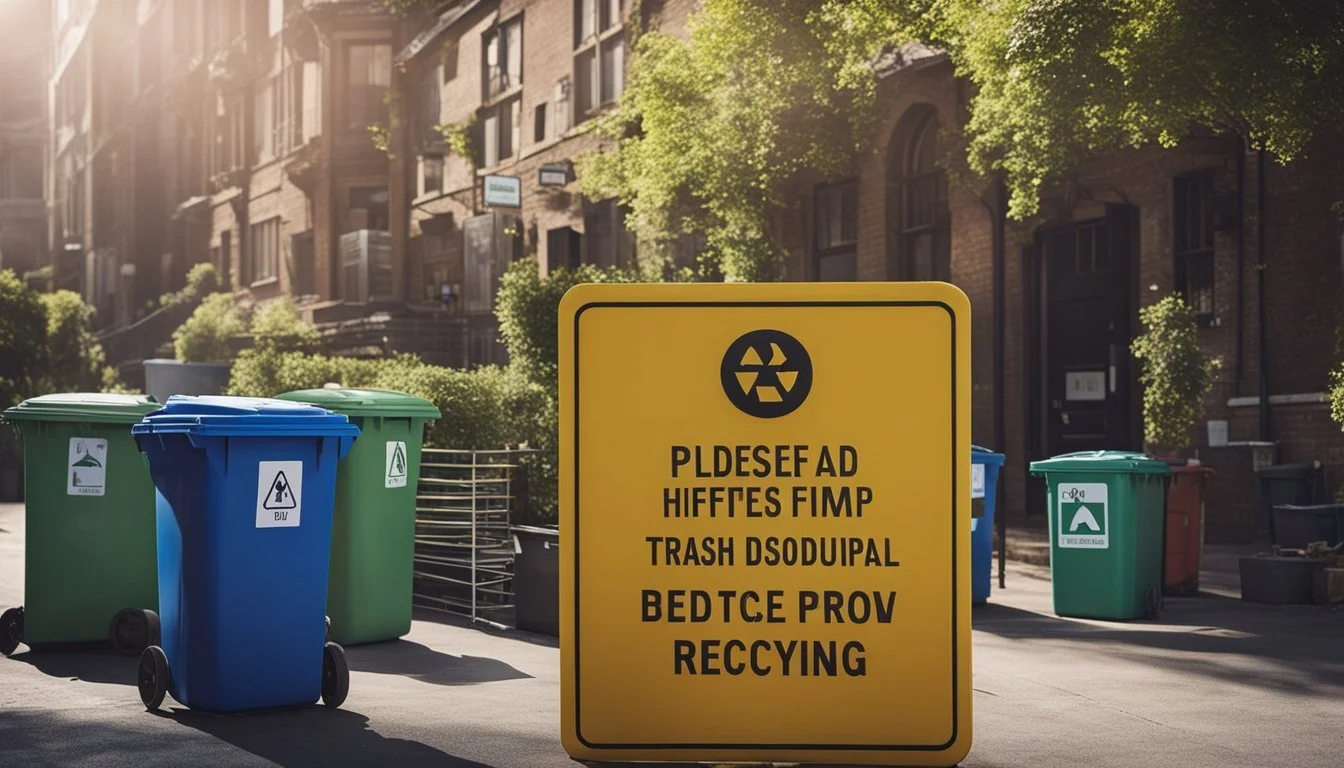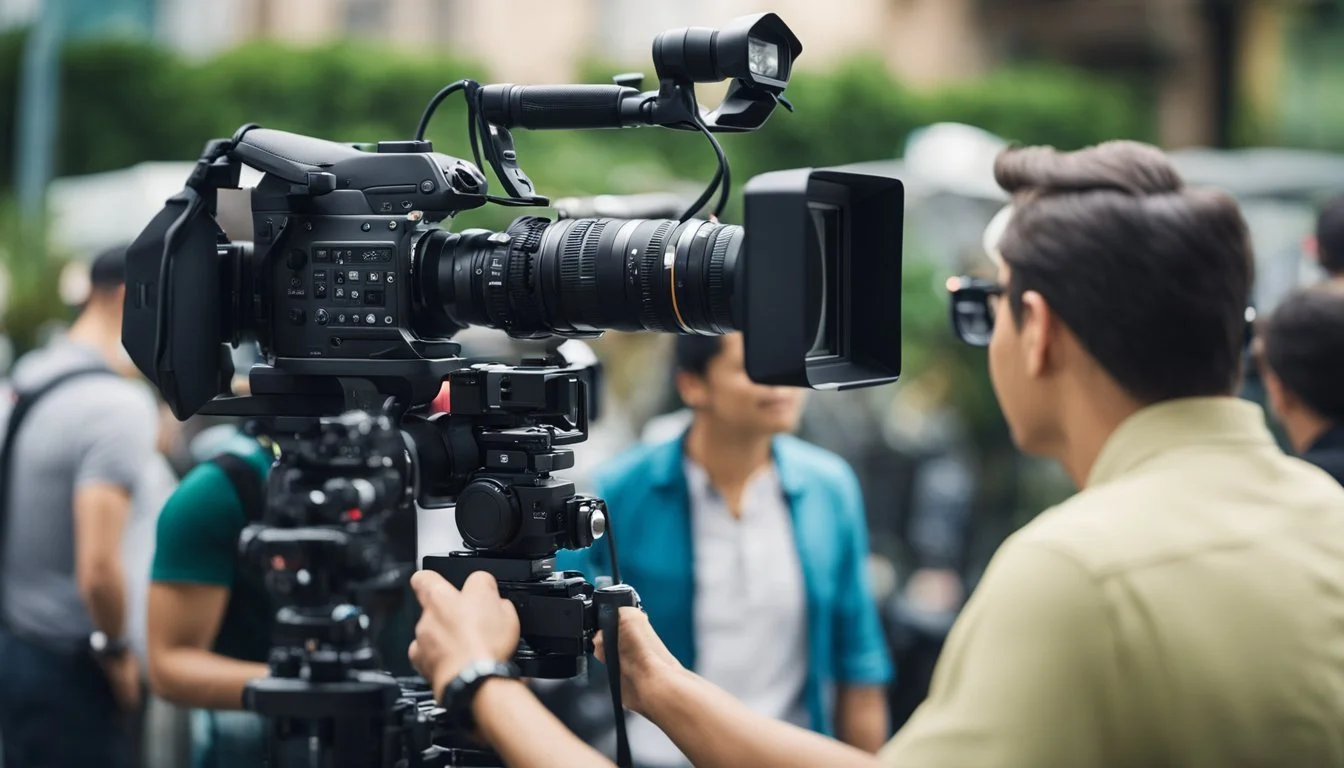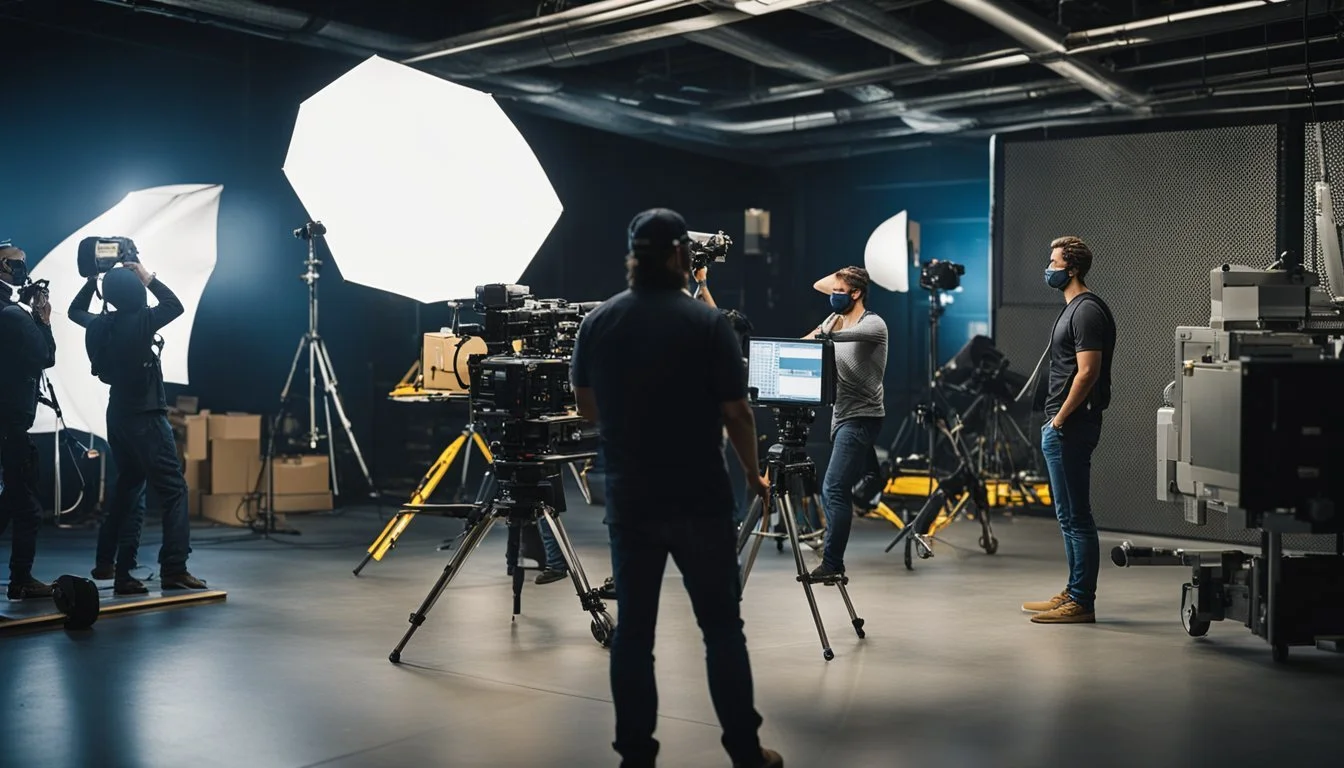17 Essential Film Set Etiquette Rules Every Filmmaker Should Know for a Smooth Production
Navigating a film set can be a complex endeavor, requiring not just technical skills but also a keen sense of interpersonal dynamics and professional etiquette. Whether one is a seasoned veteran or a newcomer to the industry, understanding the unspoken rules can significantly impact the efficiency and atmosphere of a production environment. Respect for the set and the people working on it is paramount to ensuring smooth operations and maintaining professional relationships.
The film set is a unique ecosystem where every role, from director to crew member, contributes to the collective goal of bringing a vision to life. Adhering to established etiquette helps streamline processes and fosters a respectful and collaborative working environment.
1) Respect Call Times
Respecting call times is crucial for maintaining order on a film set. Call times refer to the designated times when cast and crew are expected to be present and ready for work. Arriving on time shows professionalism and respect for everyone's schedule.
Being punctual can prevent delays in the production process. Film schedules are often tight, and even a small delay can have a domino effect, impacting multiple departments.
It's important to prepare in advance to ensure timely arrival. This might include mapping out your route, accounting for potential traffic, and setting alarms if necessary. Proper planning helps avoid unforeseen circumstances that could cause you to be late.
If you're running late, always inform the relevant person as soon as possible. Communication can help manage expectations and allow for necessary adjustments to be made.
Respecting call times also extends to breaks and meal periods. Returning promptly from breaks ensures that production can continue smoothly and efficiently. Adhering to these times helps maintain a professional and collaborative environment on set.
Every member of the team, from actors to crew, plays a vital role in the workflow. Respecting call times demonstrates commitment to the project and support for your colleagues' efforts.
2) Always Be Early
Arriving early is critical on a film set.
It sets a professional tone and demonstrates respect for the time of others. Being early ensures you have time to prepare, gather necessary materials, and address any unforeseen issues before filming begins.
Early arrival also allows for better collaboration with other crew members and cast.
Those extra minutes can make a significant difference in ensuring the day's schedule remains intact.
Emergencies can arise unexpectedly.
Being early provides a buffer to handle these scenarios without causing major disruptions. This practice fosters a reliable reputation, which is invaluable in the film industry.
Additionally, arriving early gives you the opportunity to familiarize yourself with the set.
Understanding the layout and setup helps streamline your workflow and minimizes mistakes during production.
Every team member benefits, ensuring smoother operations and an efficient working environment.
3) Know Your Role
Understanding your position on a film set is crucial. Every person has a specific job to perform, and knowing exactly what that entails helps the entire production run smoothly.
Respect the chain of command. Recognize your direct supervisors and whom you report to. This hierarchical structure maintains order and ensures tasks are completed efficiently.
Avoid stepping outside your assigned duties. Trying to take on roles that aren't yours can create confusion and disrupt the workflow. Stay focused on your responsibilities.
Familiarize yourself with the terms and jargon commonly used on set. This allows clear communication and assists in avoiding misunderstandings. Using the correct language shows professionalism and proves your competency.
Every role, no matter how small, contributes to the final product. Showing respect for each position fosters a collaborative atmosphere and boosts overall morale.
4) Stay Quiet on Set
Noise on set can disrupt the filming process and cause delays. It's crucial for everyone to maintain silence to ensure clear communication. Unnecessary sounds can distract actors, ruin takes, and waste valuable time.
Crew members should use hand signals over verbal communication whenever possible. This ensures that essential instructions are conveyed without creating a disturbance.
Even whispers can be picked up by sensitive microphones. This is why staying completely silent is imperative during takes. Keeping conversations to designated break areas helps maintain the professionalism and efficiency of the set.
Directors and key personnel may need to discuss important details during filming, but this should be done quietly and efficiently. They should avoid chatting near the set microphones.
Anyone not directly involved in the current shot should maintain a respectful silence. Moving quietly and avoiding loud footsteps are essential practices for all on set.
Good set etiquette means understanding where and when to speak. Remaining quiet until the director calls "cut" or specific instructions are given ensures a smooth production.
5) Turn Off Your Phone
Mobile phones can be incredibly disruptive on a film set. Notifications, calls, and messages create distractions and can interrupt crucial moments during filming. It’s courteous and professional to keep your phone turned off or on silent mode while on set.
Having a phone ring unexpectedly can break the concentration of both the cast and crew. This can lead to retakes, wasting precious time and resources. Filmmakers should remind everyone to silence their devices before shooting starts.
Emergencies may arise, but should be handled discreetly. If there’s a need to check your phone, it should be done away from the set. This ensures that the filming environment remains focused and undisturbed.
Even vibrating phones can be problematic. Vibrations can still be picked up by audio equipment, leading to sound issues that might not be immediately noticeable. Keeping phones off eliminates these risks entirely.
Turning off phones also helps maintain the secrecy of the project. Unauthorized photos or videos taken on set can lead to leaks. Ensuring phones are off helps in protecting the confidentiality of the production and maintaining its integrity.
6) Be Prepared
Preparation is key on any film set. Arrive early to familiarize yourself with the environment. This allows you to locate essential areas like restrooms, break rooms, and emergency exits.
Carry all necessary tools and personal items. Filmmakers should bring scripts, notes, and any required equipment. Having a checklist can help ensure nothing is forgotten.
Knowledge of the day's schedule is crucial. Reviewing call sheets and plans helps align your duties with the production timeline. This ensures smooth operation and minimizes disruptions.
Keep additional supplies on hand. Items like extra batteries, pens, and notepads can be lifesavers during unforeseen circumstances. Being over-prepared can prevent delays and enhance efficiency.
In addition to physical preparation, mental readiness is essential. Understanding your role and responsibilities enables better collaboration with the team. This focus promotes a professional atmosphere and supports successful project completion.
7) Respect the Crew
Respecting the crew is vital for maintaining a positive working environment on a film set. The crew works tirelessly behind the scenes to ensure everything runs smoothly. Their roles might not always be in the spotlight, but without them, production would come to a standstill.
Acknowledge the hard work of every crew member. Simple gestures like saying "thank you" or giving a nod of appreciation can go a long way. Directors, actors, and other key personnel should never underestimate the impact of showing gratitude.
Avoid complicating their jobs. This means showing up on time, prepared, and ready to shoot. Being punctual and organized helps the crew follow the schedule without unnecessary delays. Always follow on-set rules and guidelines set by the crew to avoid causing disruptions.
Understand the chain of command. Each department has its own hierarchy, and respecting these structures ensures efficient communication. Problems should be addressed through the proper channels rather than taking matters into one's own hands, which can lead to confusion and delays.
Respecting the tools and equipment of the crew is another essential aspect. Avoid touching or moving any equipment unless expressly instructed to do so by the responsible crew member. Mishandling gear can lead to costly damages and production delays.
8) Handle Equipment with Care
Equipment on a film set is often expensive and specialized. Treating it with care is crucial.
Only use equipment if you're authorized. Each department usually has specialists responsible for their gear.
Never move or adjust equipment without permission. What's seemingly a minor tweak can have significant consequences for others' work.
Report any issues with equipment immediately. Prompt action can prevent delays and costly damage.
Respecting the equipment ensures smoother operations and demonstrates professionalism on set.
9) Dress Appropriately
Dressing appropriately on a film set is crucial for maintaining a professional and efficient working environment. Appropriate attire depends on your role in the production. Crew members should wear practical and comfortable clothes that allow ease of movement. Closed-toe shoes are often required for safety reasons.
Actors should follow the wardrobe guidelines provided by the costume department. For other roles, the production team may specify a dress code. Always comply with these standards to respect the project's requirements.
Professional attire shows commitment and dedication. It also helps in preventing distractions and accidents. Avoid wearing overly casual or flashy clothing that could hinder your performance or the work of others.
10) Follow Safety Protocols
Safety protocols on film sets are of utmost importance. They ensure that all cast and crew members are protected from potential hazards. Before starting any production, everyone should be briefed on the specific safety guidelines.
It is crucial to wear appropriate personal protective equipment (PPE) when required. This may include items like hard hats, safety vests, or gloves, depending on the scene being filmed.
Always be aware of your surroundings. Film sets can have complex machinery and equipment. Knowing where everything is can prevent accidents and injuries.
Emergency exits should always be accessible and unobstructed. In case of an emergency, every member should know the quickest route to safety and assembly points.
Fire safety cannot be overlooked. Make sure there are fire extinguishers readily available and that everyone knows how to use them. Avoid smoking in unauthorized areas to limit fire risks.
When using special effects or stunt work, trained professionals should manage and execute them. Proper rehearsals and safety checks are essential before performing any dangerous action.
Medical personnel should be on-site during shoots, especially those involving stunts or potentially hazardous activities. Quick medical response can make a significant difference in case of an accident.
By following these safety protocols, filmmakers create a secure environment where creativity can flourish without compromising the well-being of the team.
11) Be Flexible
Flexibility on a film set is crucial. Changes in schedule, script adjustments, and unexpected delays are common. Being adaptable helps the entire crew stay on track despite these challenges.
Crew members must be ready to adjust their tasks based on the director's new vision or sudden changes in scene requirements. This adaptability ensures the project progresses smoothly.
It's essential for filmmakers to prioritize the overall goals of the production. This might mean working longer hours or stepping into roles outside their typical duties. Flexibility in these situations can make a significant difference in meeting deadlines.
Actors, too, must be prepared to alter performances based on direction and feedback. This flexibility can lead to better takes and a more cohesive final product. Handling these changes with a positive attitude is vital.
Effective communication also plays a role in maintaining flexibility on set. Being open to discussing challenges and adapting plans can prevent misunderstandings and keep everyone aligned with the project's needs.
In summary, flexibility is a key component of film set etiquette. Embracing changes and working through unexpected obstacles with a cooperative mindset ensures a more efficient and harmonious production environment. Everyone's willingness to be flexible contributes to the project's success.
12) Communicate Clearly
Clear communication is fundamental on a film set. It ensures everyone is on the same page and minimizes misunderstandings. Each department has specific jargon, and knowing these terms is crucial.
Crew members should speak loudly enough to be heard but not so loud that they disrupt filming. Use hand signals and radios effectively.
Directors should give concise instructions. Long-winded explanations can confuse the crew. Producers must also relay accurate information to all departments.
Interpersonal communication matters too. Be polite and professional in all interactions. Miscommunication can lead to costly delays.
Regular updates keep everyone informed. Make sure all changes in the schedule or scenes are communicated promptly. This enhances workflow and efficiency.
Effective communication builds a positive work environment, which is vital for successful film production.
13) No Unauthorized Photos
Taking unauthorized photos on a film set is highly discouraged.
Photos can inadvertently capture sensitive information like set designs, costumes, or unreleased projects.
Releasing such images can lead to security breaches and potential financial losses for the production.
Always get explicit permission from the relevant authorities before snapping any pictures.
This rule applies to everyone on set, regardless of their role.
Even if you think a moment is harmless, it's best to check first.
Following this guideline helps maintain professionalism and respect for the creative process.
Unauthorized photos may also violate contracts or non-disclosure agreements.
Respecting these rules ensures a smooth and secure filming environment.
14) Observe Food Etiquette
Respecting food etiquette on a film set ensures a conducive environment for everyone. Always clean up after yourself in the dining area. Leaving behind a mess is disrespectful to the crew responsible for keeping the set tidy.
Avoid bringing strong-smelling foods, as they can be distracting or unpleasant for others. Stick to neutral, universally liked snacks and meals. This consideration helps maintain focus and comfort for everyone present.
Coffee and water are essential on any set. Ensure these staples are always available and replenished throughout the day. Proper hydration and access to caffeine can significantly impact morale and energy levels.
Never take more food than you need. This helps ensure there's enough for everyone. It's a simple yet crucial way of showing consideration for your colleagues.
Be mindful of dietary restrictions and label any communal food items accordingly. This practice prevents any accidental consumption of allergens and accommodates everyone’s needs, fostering inclusiveness.
15) Dispose of Trash Properly
Proper disposal of trash on a film set is essential for maintaining a clean and efficient working environment.
Crew members should always use designated trash bins provided on set. This prevents clutter and keeps the area safe for everyone.
Leave no personal items, food wrappers, or equipment parts lying around. This reduces hazards and ensures smooth operations.
Instruct the team to recycle when necessary. Separating recyclable materials from general waste supports environmental efforts.
Checking the space for trash at the end of each day prevents buildup and maintains order throughout the filming period.
Each individual's effort to manage their waste contributes to a well-organized and professional set.
16) Be Patient
Patience is critical on a film set. Production schedules are often unpredictable, and delays can happen for various reasons. Being patient helps maintain a positive atmosphere.
Crew members and actors may need to redo scenes multiple times. Remaining calm and composed is essential. It fosters a supportive environment, which is crucial for creativity and collaboration.
Unexpected technical issues or weather changes can stall progress. Patience allows the team to address these challenges effectively without added stress. Everyone should be prepared to adapt to new timelines.
Patience also extends to interactions with colleagues. Filmmaking is a team effort, and patience with others helps build strong professional relationships. It ensures smoother communication and collaboration. This can make a significant difference in the overall workflow and final product quality.
17) Support Your Teammates
Supporting teammates is crucial for maintaining a harmonious film set.
Everyone on set has unique skills and responsibilities. Acknowledging and respecting these roles cultivates a collaborative environment.
Offering assistance when needed shows commitment and builds trust among crew members.
Encouragement and positive feedback go a long way. Simple gestures like a nod or a word of appreciation can boost morale.
Being observant helps in identifying when a colleague is overwhelmed. Stepping in or offering help promptly can prevent mistakes and delays.
Clear communication is key. Providing information and feedback transparently ensures that everyone remains on the same page.
Respecting the efforts of others and valuing their contributions fosters goodwill.
Supporting teammates leads to smoother operations and a more enjoyable work experience for everyone on set.
Understanding Film Set Roles
The successful operation of a film set depends on the individual responsibilities of key crew members. Knowing the primary functions of these roles ensures smooth communication and workflow.
Director
The Director holds the creative vision for the film.
Responsibilities include guiding actors' performances, determining camera angles, and leading the film's overall tone and style. Effective directors collaborate closely with other department heads to make sure their vision is achievable within set constraints. They communicate their ideas to the cast and crew clearly and effectively.
A director's decision-making process often involves quick thinking and adaptability. They need to be adept at problem-solving, handling unexpected issues on set with composure.
Producer
The Producer oversees the financial and logistical aspects of a film.
They manage budgets, hire key personnel, and ensure the project stays on schedule. The producer frequently liaises between the film's investors and the creative team, making sure both sides' expectations are met. Additionally, producers handle legal paperwork and clearances needed for the film's completion.
Effective producers are excellent multitaskers and negotiators. They work tirelessly to ensure the film is financially viable while also supporting the director's creative vision.
Cinematographer
The Cinematographer (or Director of Photography) is responsible for the visual aspects of the film.
Tasks include lighting design, camera operation, and choosing lenses and filters. They collaborate closely with the director to bring the film's aesthetic vision to life. Cinematographers must understand various technical aspects, such as exposure, composition, and color balance.
It's essential for a cinematographer to balance artistry with the practicalities of shooting on set. They often oversee camera crews and must ensure that each shot not only looks stunning but also adheres to the technical requirements of the film.
Communication Protocols
Effective communication on a film set is vital for a successful production. This involves clear and concise communication as well as maintaining respectful language among all team members.
Clear and Concise Communication
Clear communication ensures everyone on set understands their roles and responsibilities. For example, call times, scene descriptions, and technical details must be expressed without ambiguity.
Directives should be short, precise, and clearly articulated.
Using radios or intercom systems? Be sure to use codes and standard phrases that all crew members understand. Miscommunication can lead to delays and errors.
Scripts and schedules should be readily accessible to everyone. This supports effective communication during shoots.
Respectful Language
Maintaining respectful language fosters a positive working environment. Address everyone professionally, regardless of their role or experience level.
Courtesy words like "please" and "thank you" go a long way in establishing mutual respect.
Avoid using jargon or slang that might be confusing or offensive. Clarity and respect should guide every conversation.
Use non-verbal communication judiciously. Sometimes a simple nod or gesture can convey a message efficiently. Stay aware of tone and body language to ensure they align with respectful communication.
Safety Procedures
Ensuring safety on set is critical, involving rigorous emergency protocols and diligent equipment handling.
Emergency Protocols
Every film set must have clear emergency protocols. These include having a well-defined evacuation plan and ensuring all crew members know emergency exits.
First aid kits should be readily accessible, and key personnel should be trained in first aid and CPR. Emergency contact numbers must be posted in visible areas.
In case of fire hazards or natural disasters, there should be designated safety officers responsible for conducting drills and briefings. Enforcing strict no-smoking policies in non-designated areas and having fire extinguishers checked regularly are crucial.
Communication is key—designate emergency roles and responsibilities, ensuring everyone knows who to report to during a crisis.
Equipment Handling
Proper equipment handling is non-negotiable on any film set. Crew members should be trained and familiar with the correct operation of various equipment such as cameras, lighting, and grip gear.
Always inspect equipment before use to ensure it is in good working order. Any malfunction or damage should be reported immediately, and faulty equipment should be removed from use.
Use personal protective equipment (PPE) like gloves, helmets, and safety harnesses where necessary. Ensure all wires and cables are securely taped down to prevent tripping hazards.
Follow manufacturer guidelines for usage and ensure that heavy equipment is only operated by authorized and trained personnel. Regular maintenance and safety checks should be part of the daily routine to prevent accidents.

